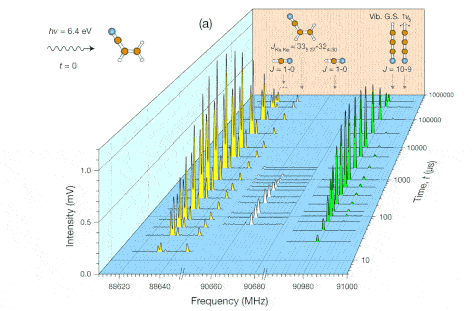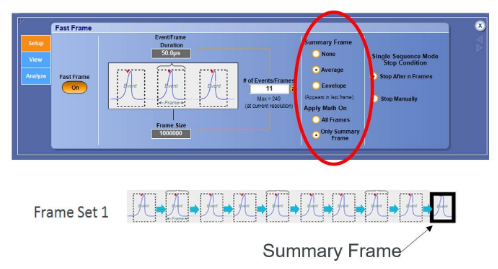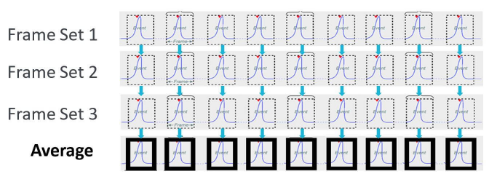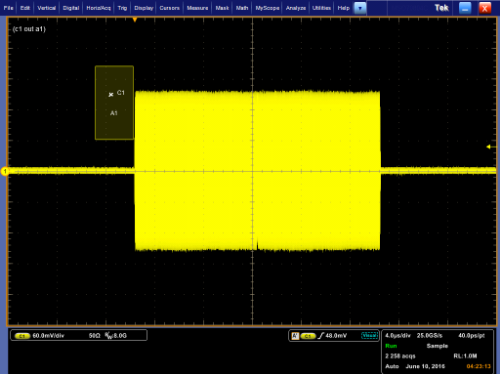
Rotational spectroscopy can accurately identify the constituent molecules in gas mixtures and is capable of studying real - time chemical reactions within the test chamber. One of the challenges of this application is that the amplitude range of spectral lines is very wide, so the acquisition system requires a very high dynamic range. Researchers use averaging to expand the dynamic range of the oscilloscope, which places a performance requirement on the oscilloscope to perform hundreds of thousands to millions of acquisitions in the shortest possible time.
New technologies are constantly being created to expand the applications of microwave spectroscopy. Today, researchers are focusing on the real - time analysis of chemical reactions. Tektronix is tracking the new features and functions of this work in real - time to support these ever - changing needs.
Rotational spectroscopy involves emitting microwave or millimeter - wave radiation through a gas sample, using a broadband signal acquisition system to acquire the received signals, converting the time - domain data to the frequency domain, and finally performing pattern matching between the acquired data and the theoretical spectral components of specific molecules to identify the actual content of the gas sample. The real - time oscilloscopes provided by Tek can directly acquire signals up to 70 GHz. These instruments can eliminate up/down converters, thereby reducing a potential error source and noise source in the signal path.

Rotational spectroscopy requires a large number of signal averages to expand the dynamic range of the acquired signal. Usually, such averaging results in a relatively long acquisition time. However, the proprietary technology provided on all Tektronix high - performance/ultra - high - performance real - time oscilloscopes uses hardware averaging built into the acquisition board to accelerate data acquisition.
Through the "Summary Frame Only" mode, which is a standard function of Tek oscilloscopes, the acquisition hardware performs point - by - point averaging on all frames and provides a summary frame with an expanded dynamic range and improved signal - to - noise ratio. If only summary frame data is needed, a significant amount of time can be saved by reducing the amount of data that needs to be transmitted from the oscilloscope acquisition board to the internal PC system of the oscilloscope. For example, you don't need to transmit 1,000 frames; instead, you only need to transmit the summary frame, thus achieving a 1000:1 data reduction.
The hardware averaging in the acquisition system provides very fast calculations, and the "Summary Frame Only" mode can significantly reduce the data within the acquisition system, thus requiring less time to transmit waveform data from the acquisition board to the PC main board inside the oscilloscope. The combination of these two functions greatly improves the analysis throughput.

Compared with static sample analysis, the evolution of real - time experiments in which researchers analyze chemical reactions places higher demands on the amount of collected data. Tektronix has developed the "Orthogonal Fast Frame Averaging" mode to meet this new requirement. The oscilloscope creates a set of average frames, which are averaged from the acquisitions of multiple frame sets, thus greatly shortening the acquisition time. After the averaging is completed, what remains is the average frame set. Similarly, if 1000 frame sets are acquired and averaged, the generated average frame set represents a 1000:1 reduction in the data transmitted to the oscilloscope's PC board.
Orthogonal Fast Frame Averaging allows users to perform efficient hard - wave averaging on multiple groups of frames to form a single average frame group. For example, each first frame is averaged point - by - point with all other acquired "first frames" to generate an "average first frame". This process is repeated for all other frame groups, generating high - resolution data representing each sequential state, with the gap between each frame as short as 6 μs.

To obtain the purest spectral and most accurate amplitude data sets, it is necessary to use correction filters to compensate for the acquired data. Tek provides two levels of solutions to address this compensation issue.
When using a Tek AWG and a Tek real - time oscilloscope, an automated program can be used to generate a pre - emphasis filter. This filter is then applied to the original AWG waveform data to create a “pre - distorted” or “pre - compensated” waveform. This compensation can automatically correct the amplitude and phase changes caused by system components (cables, up/down converters, antennas, etc.) between the AWG output and the oscilloscope input. Since this technology modifies the signal generated by the AWG, it does not affect the acquisition efficiency.
There is a more powerful compensation tool available from AWG, called Serial Data Link Analysis (SDLA). This tool generates a filter that can correct for amplitude and phase changes as well as reflections. The input to SDLA is S - parameter data (usually generated using a VNA), and the output is a FIR filter. Each time acquisition is performed using the mathematical channel on the oscilloscope, this filter is automatically applied to the oscilloscope data. This can be applied to the final data set to minimize the impact on acquisition efficiency.